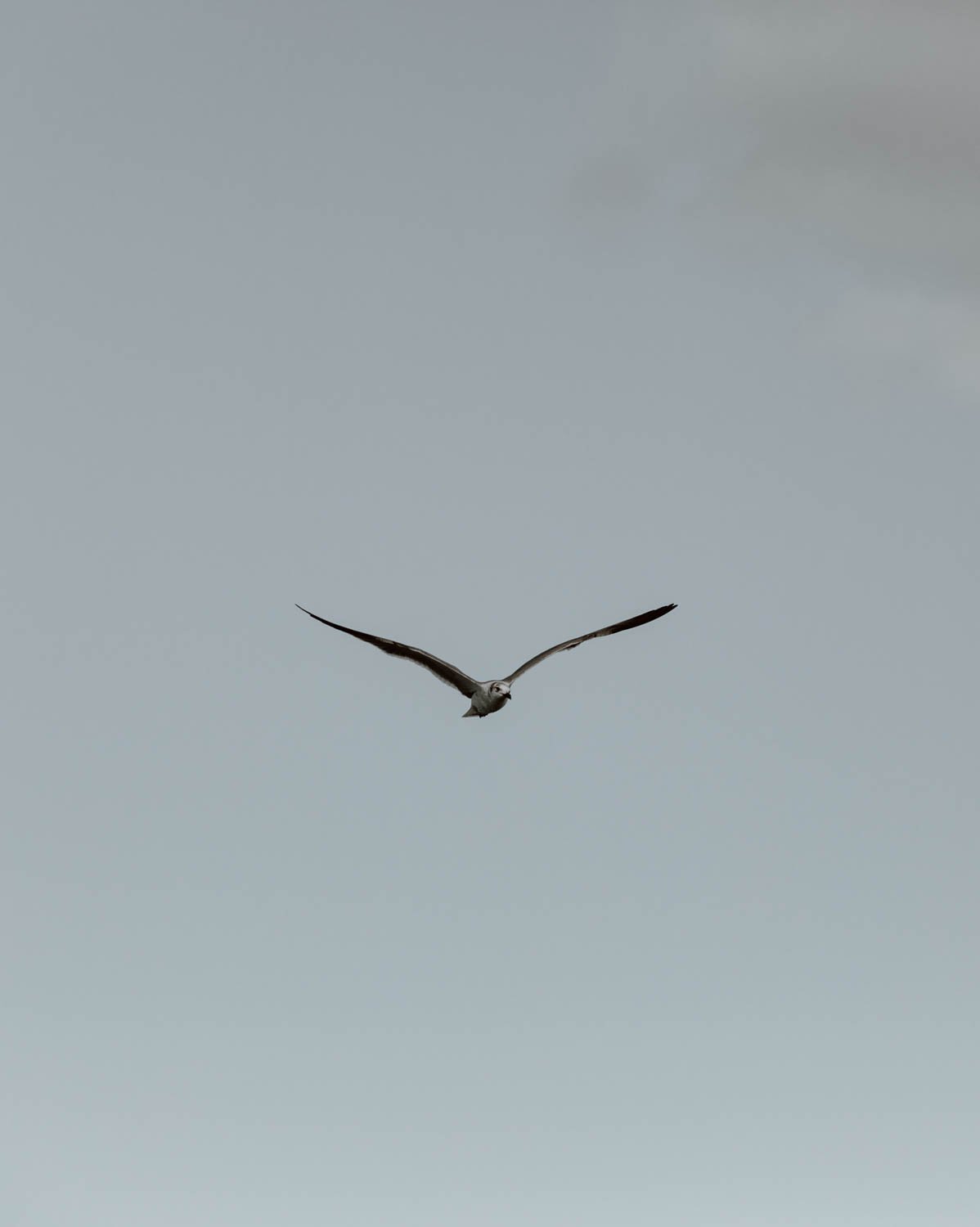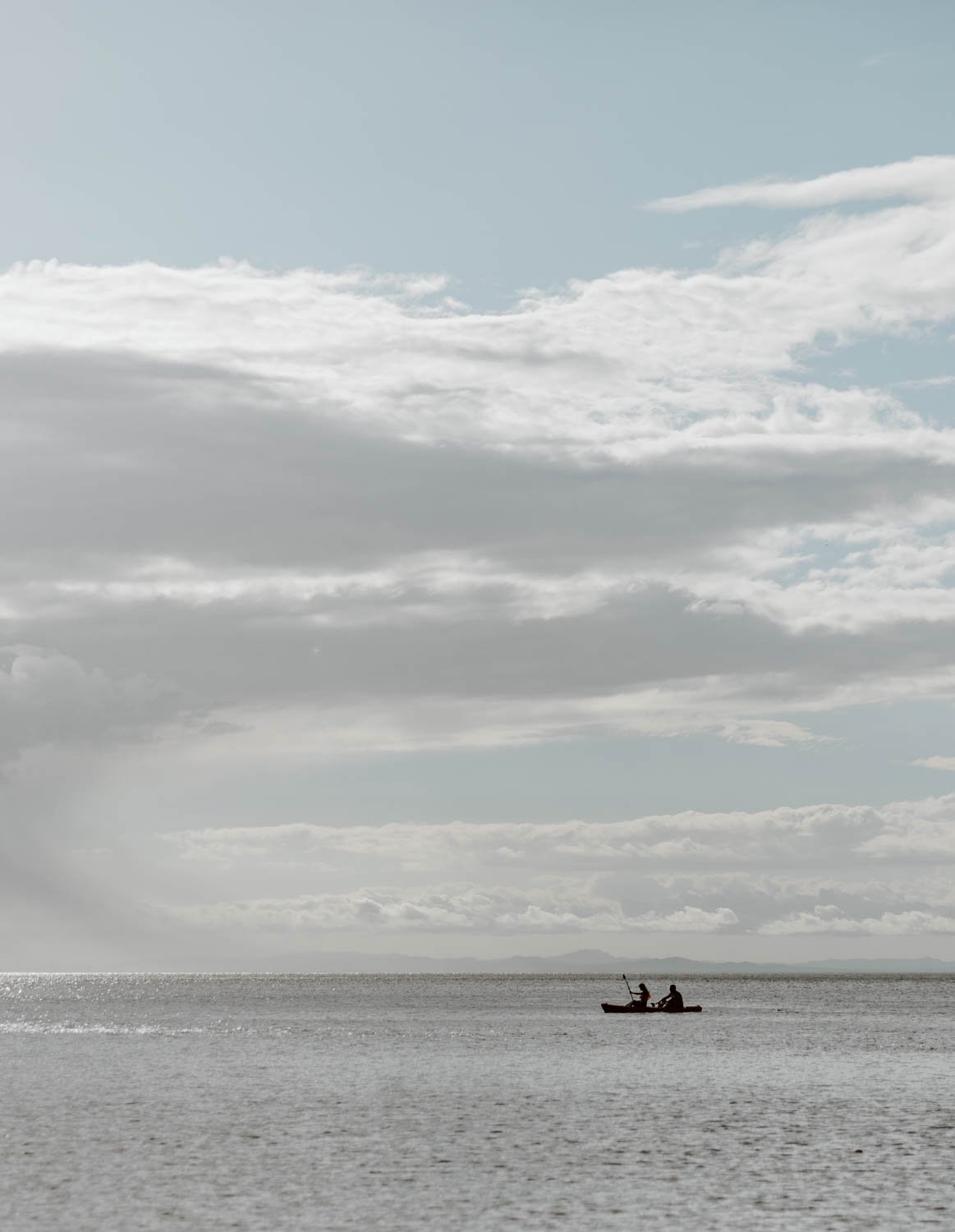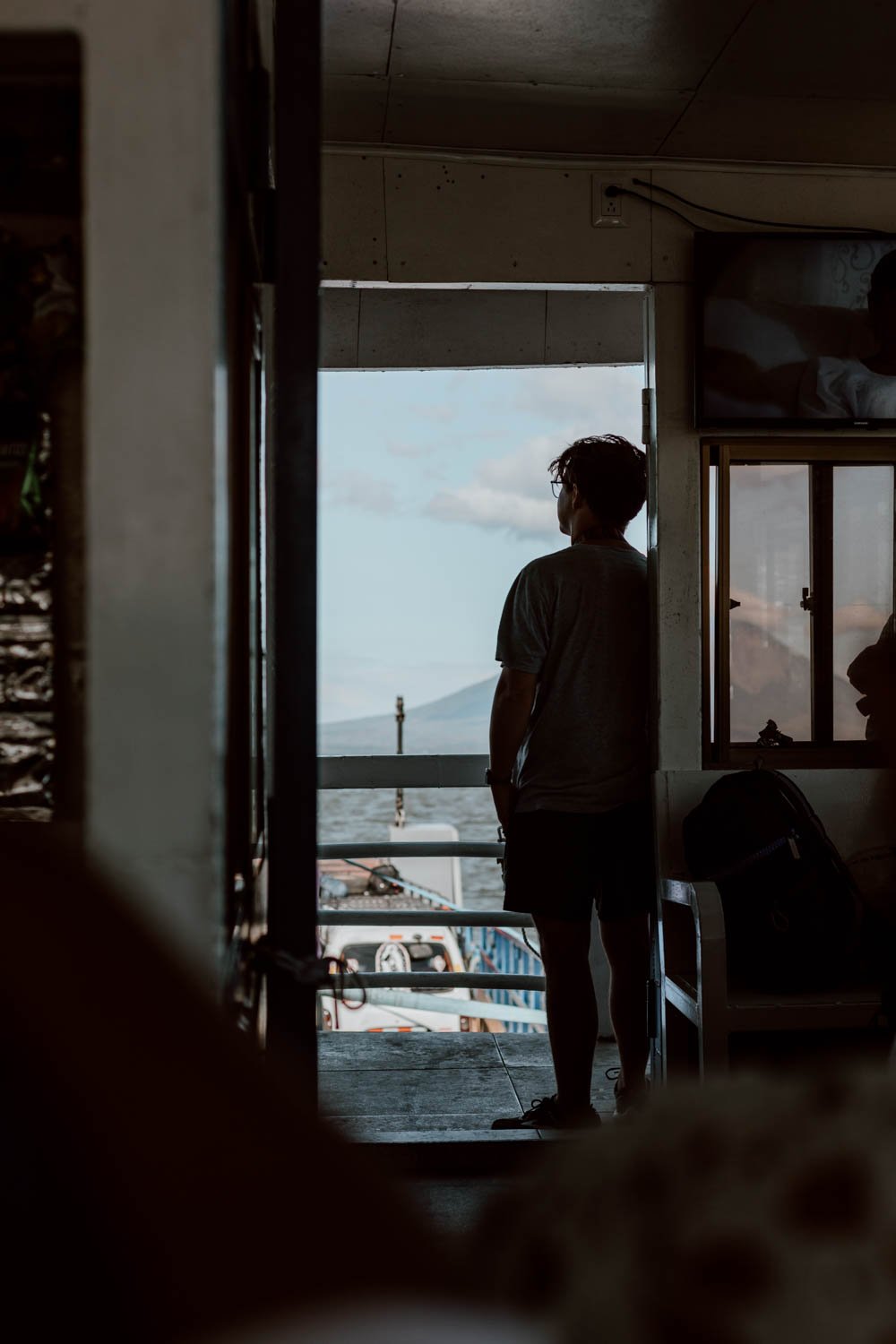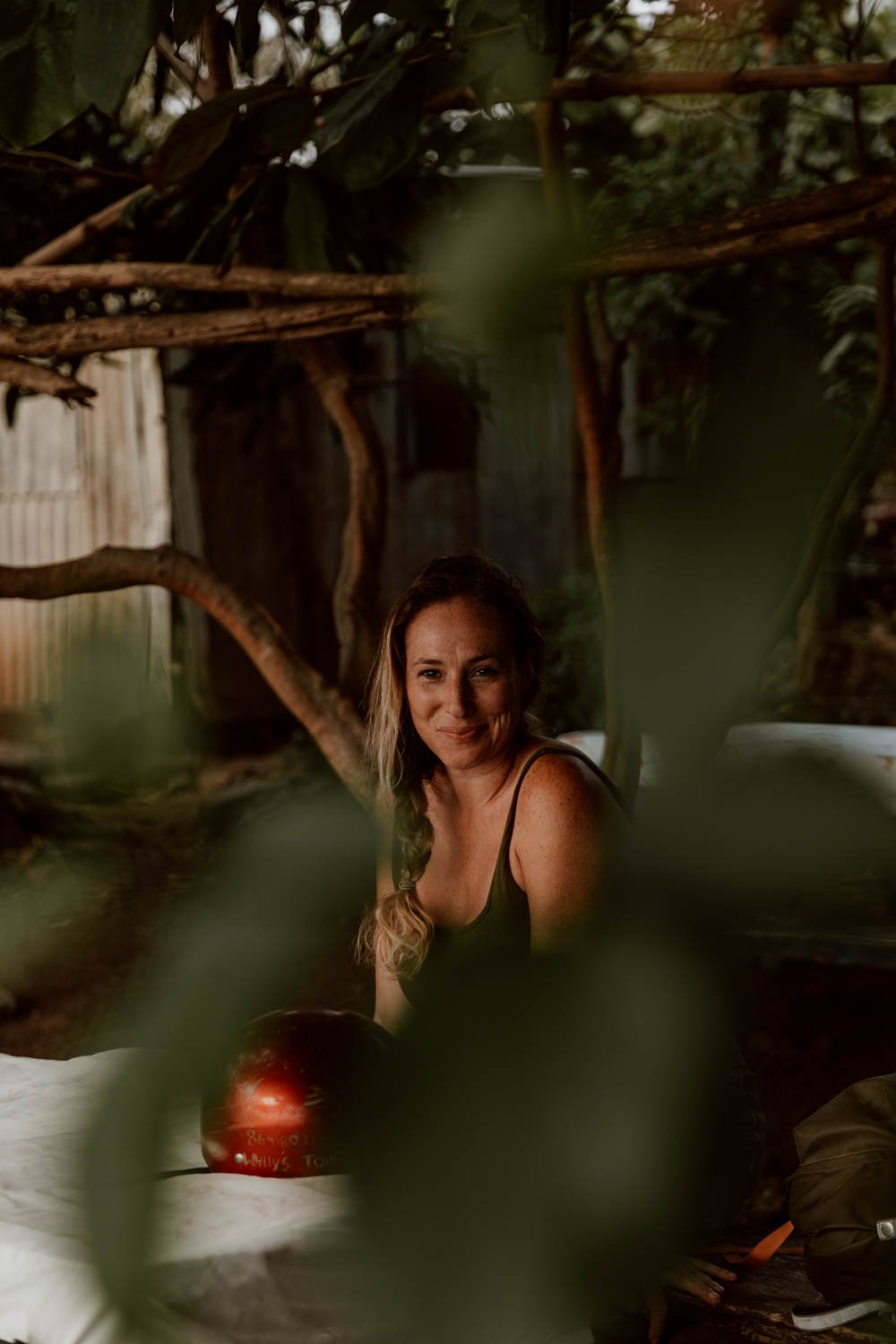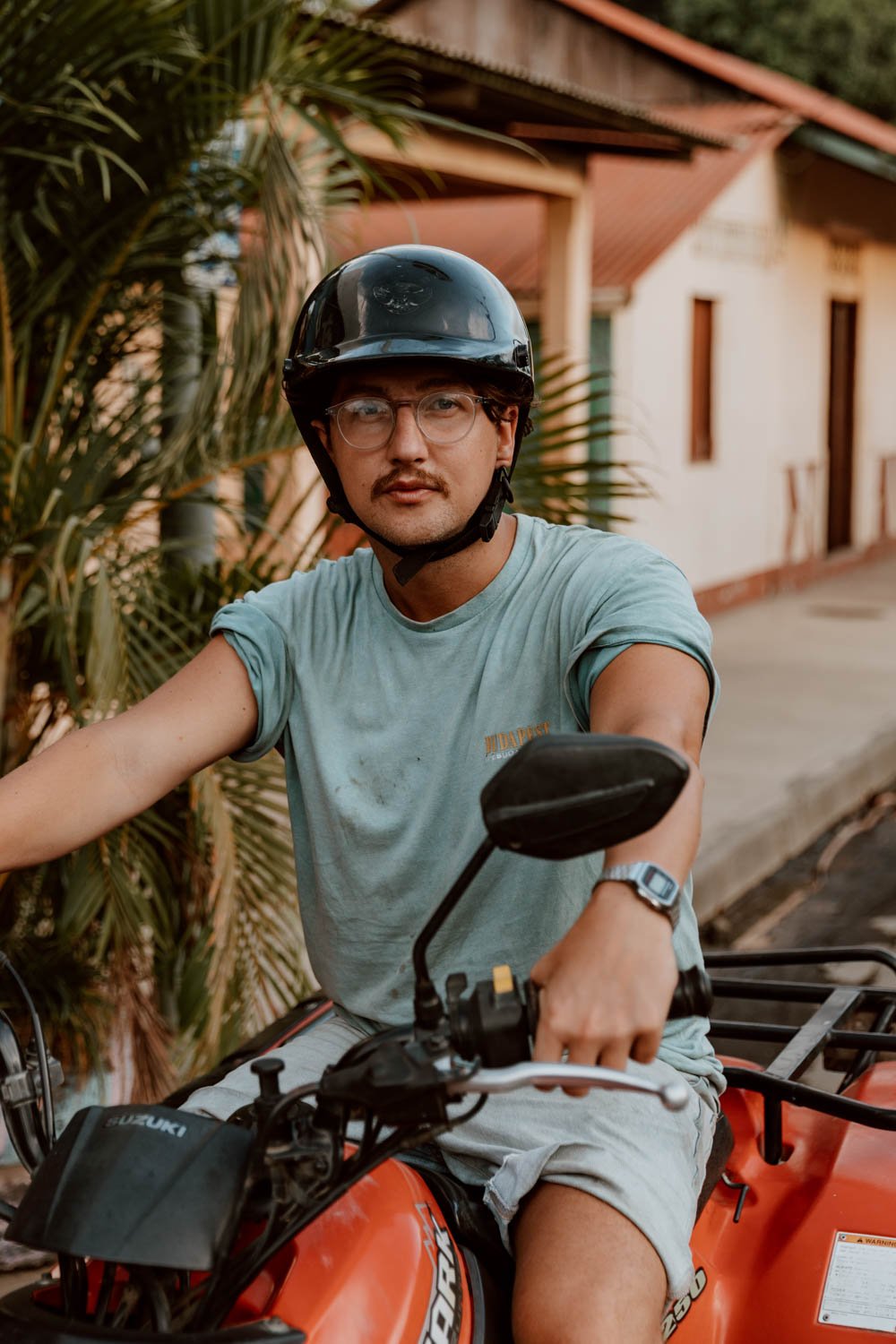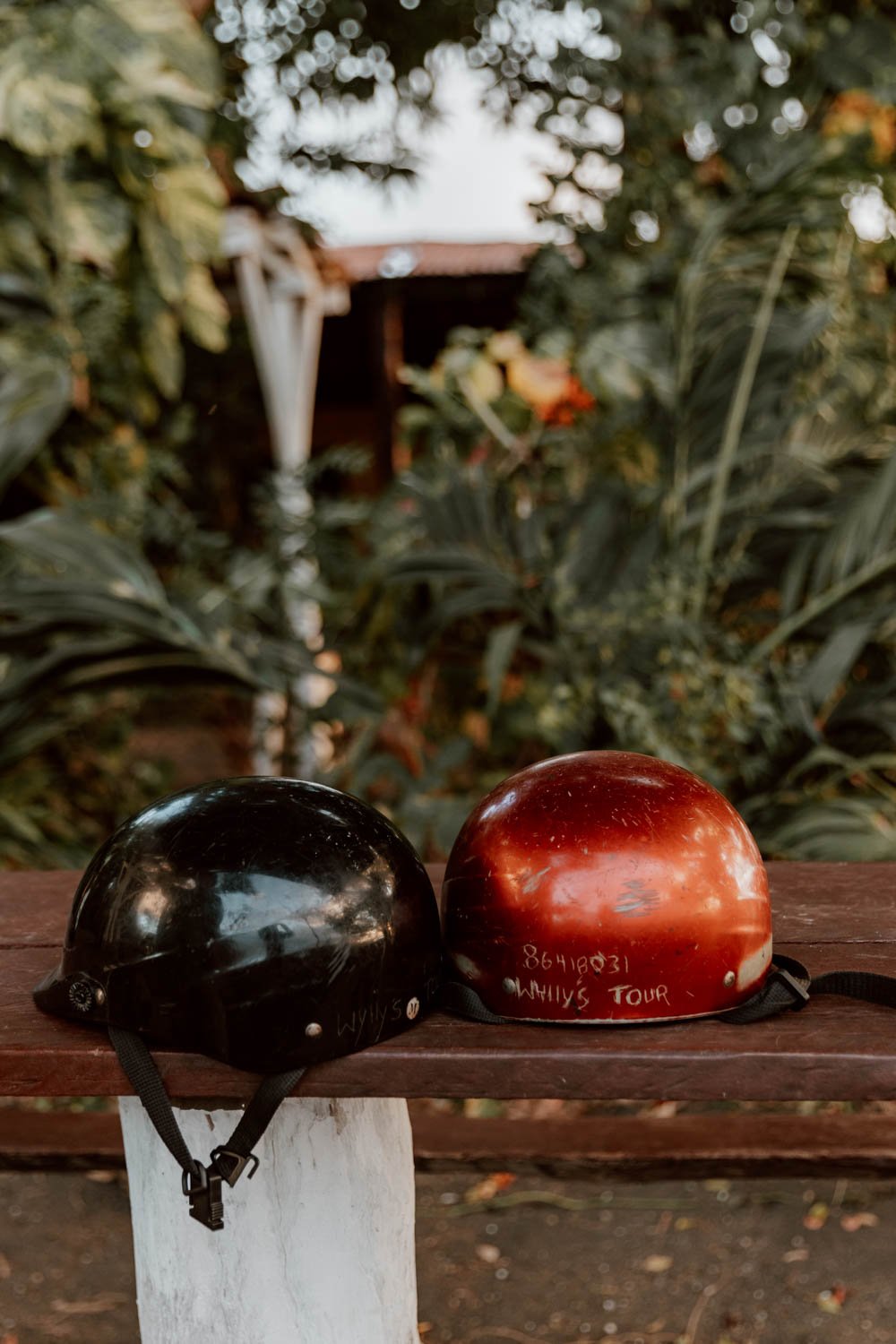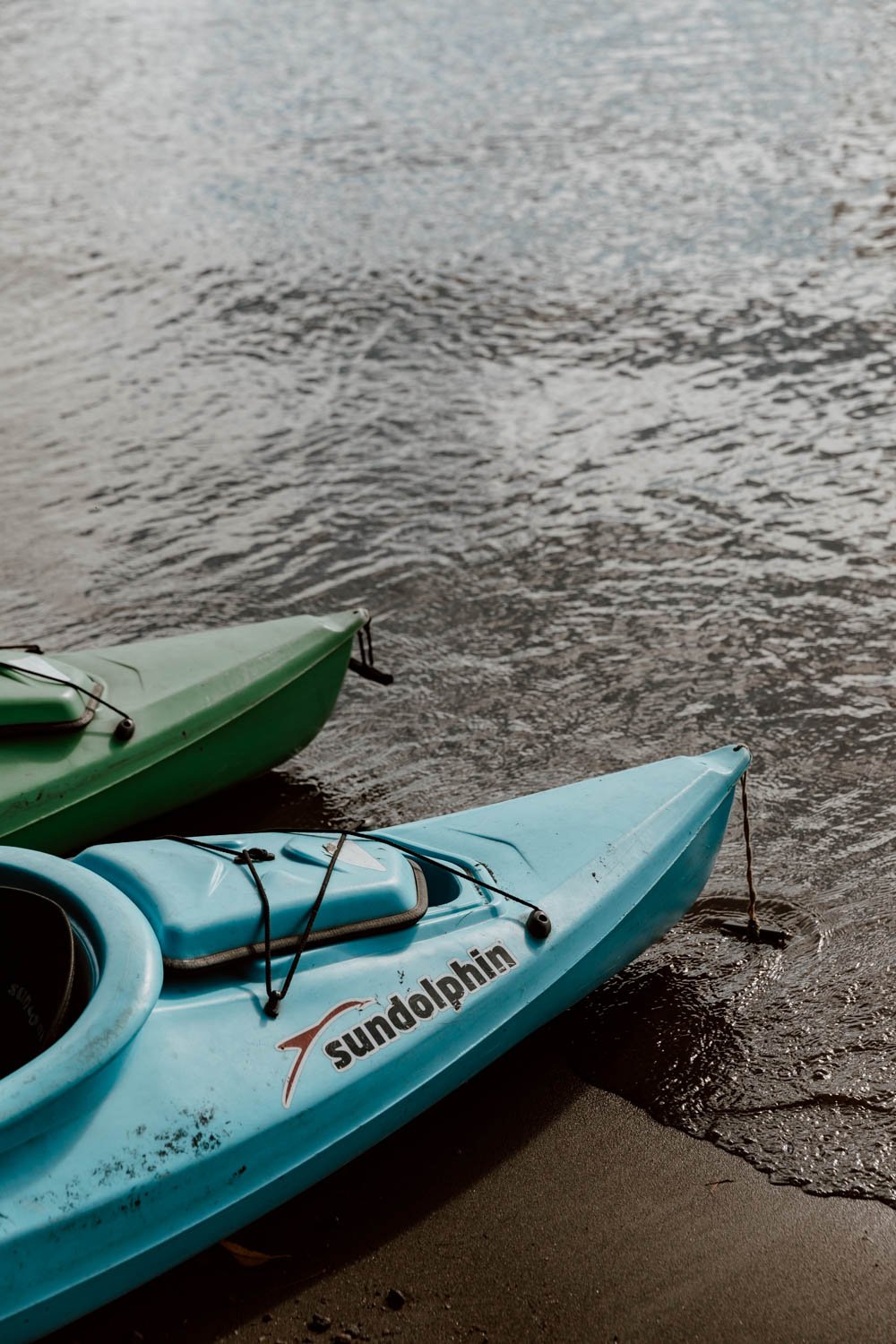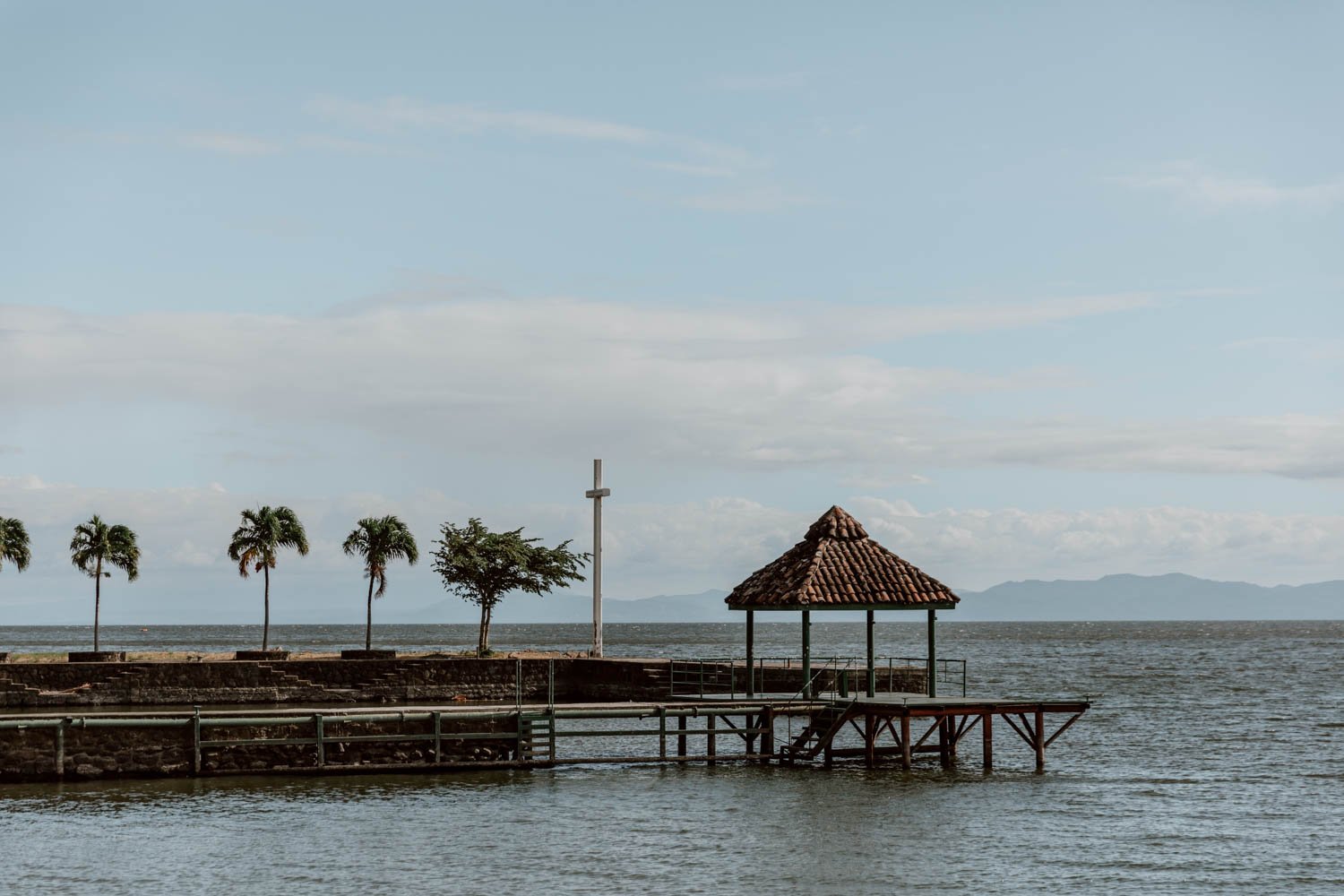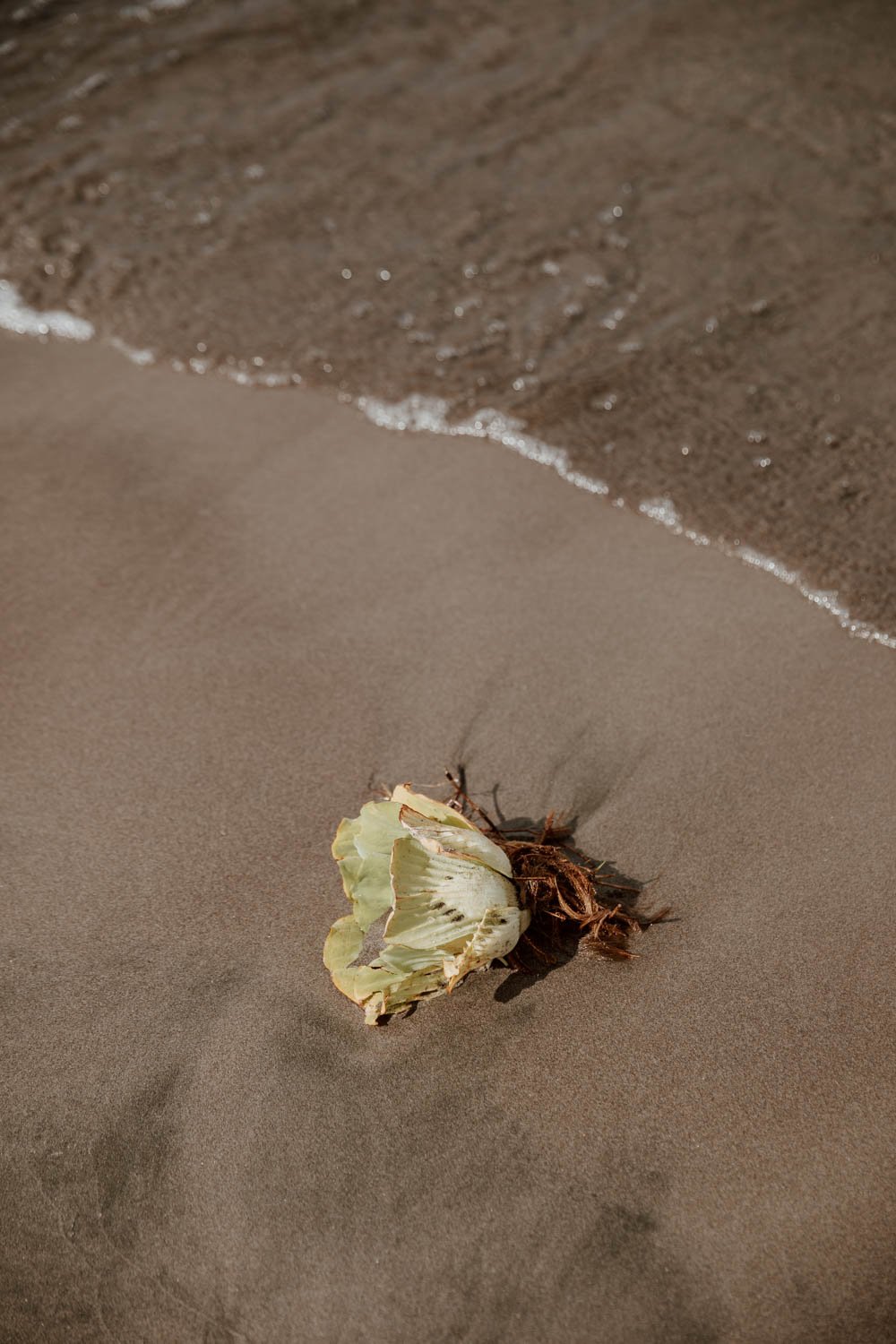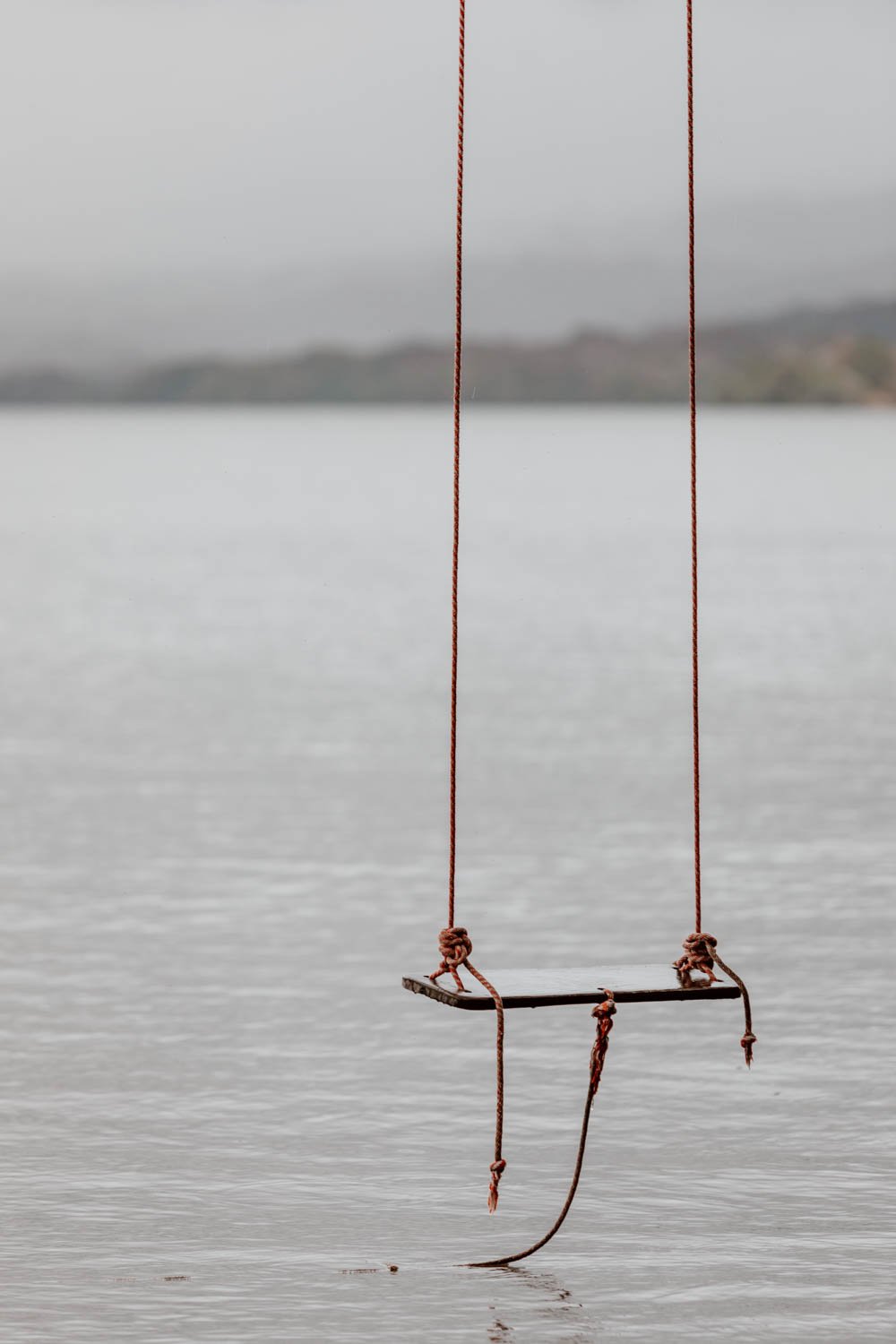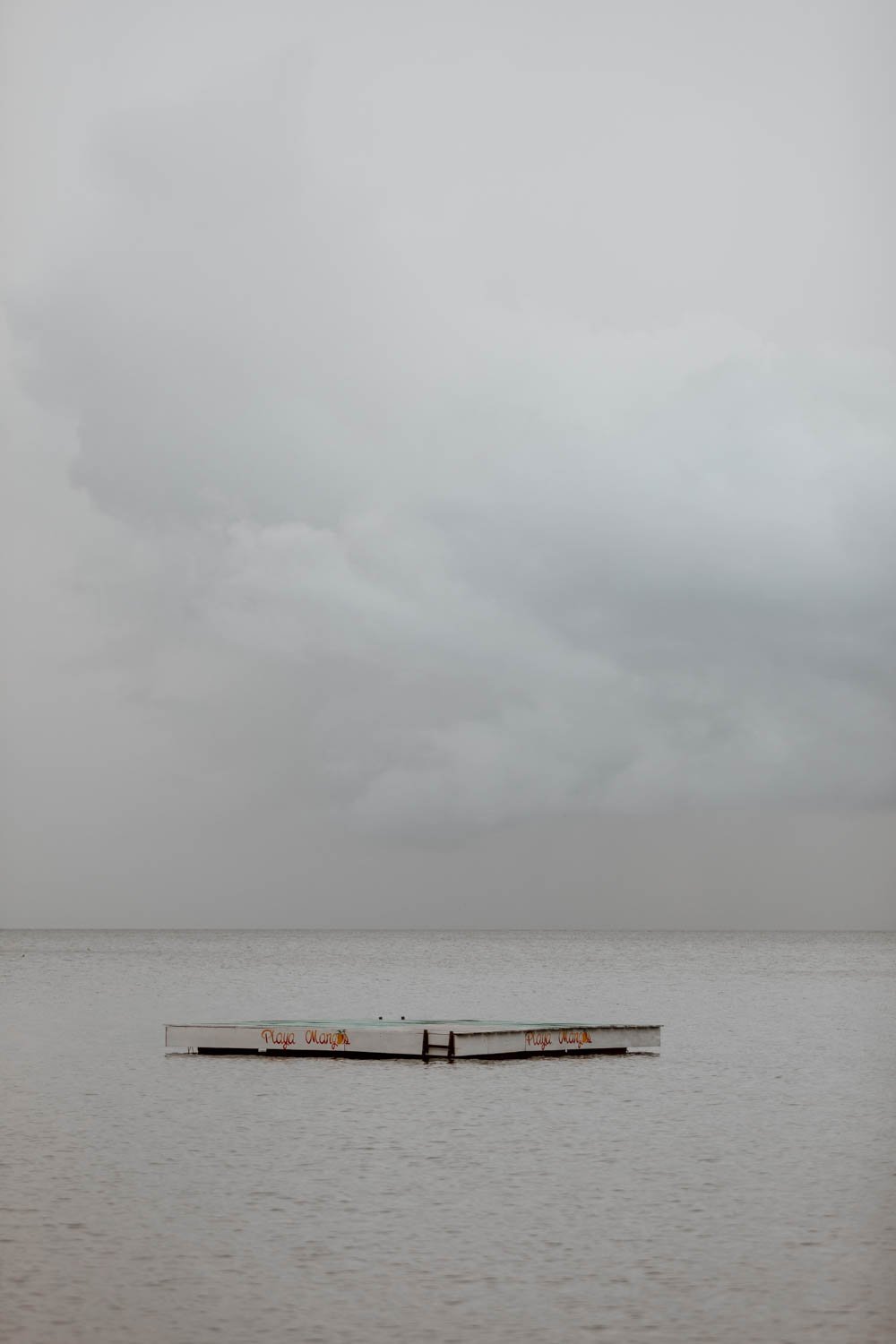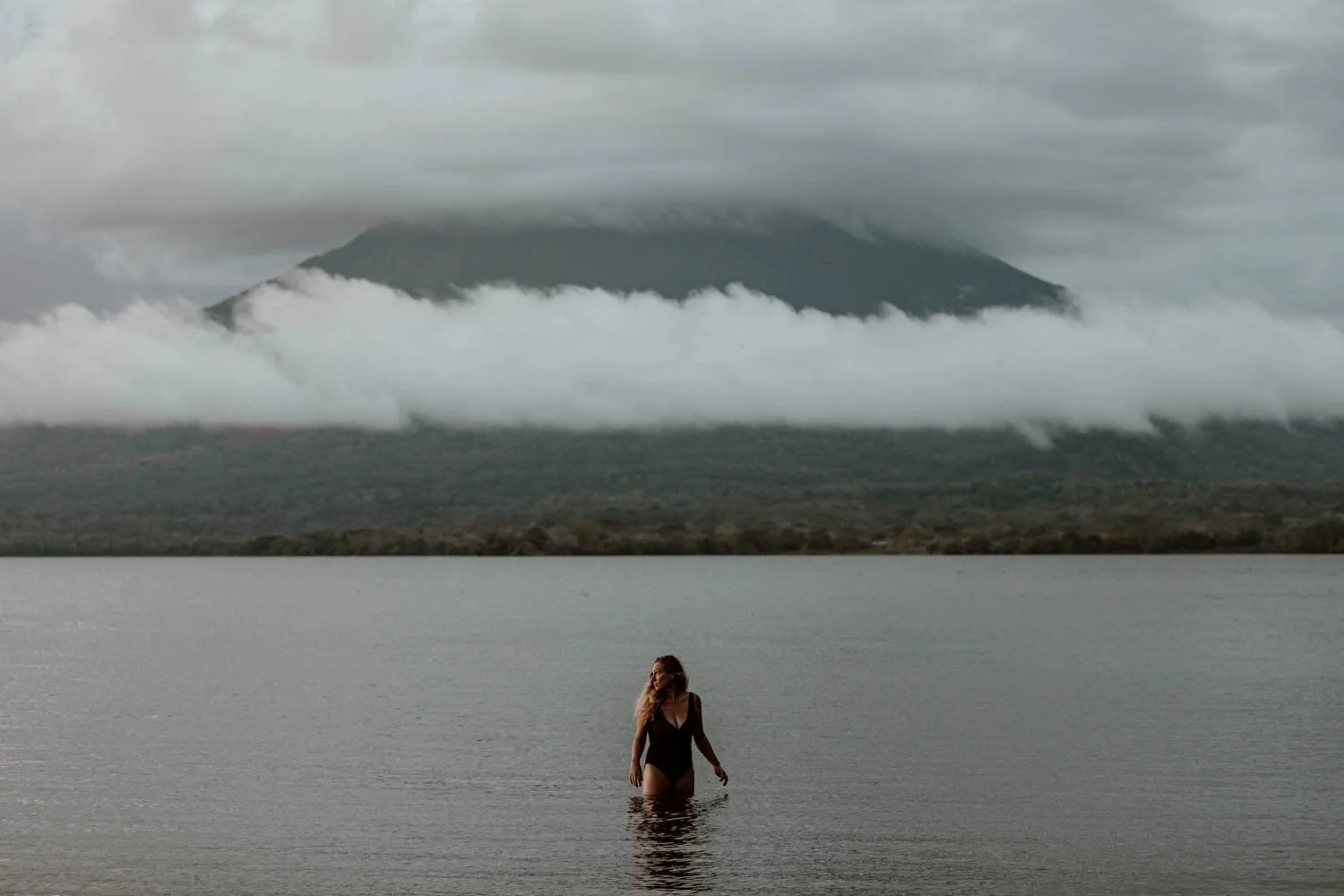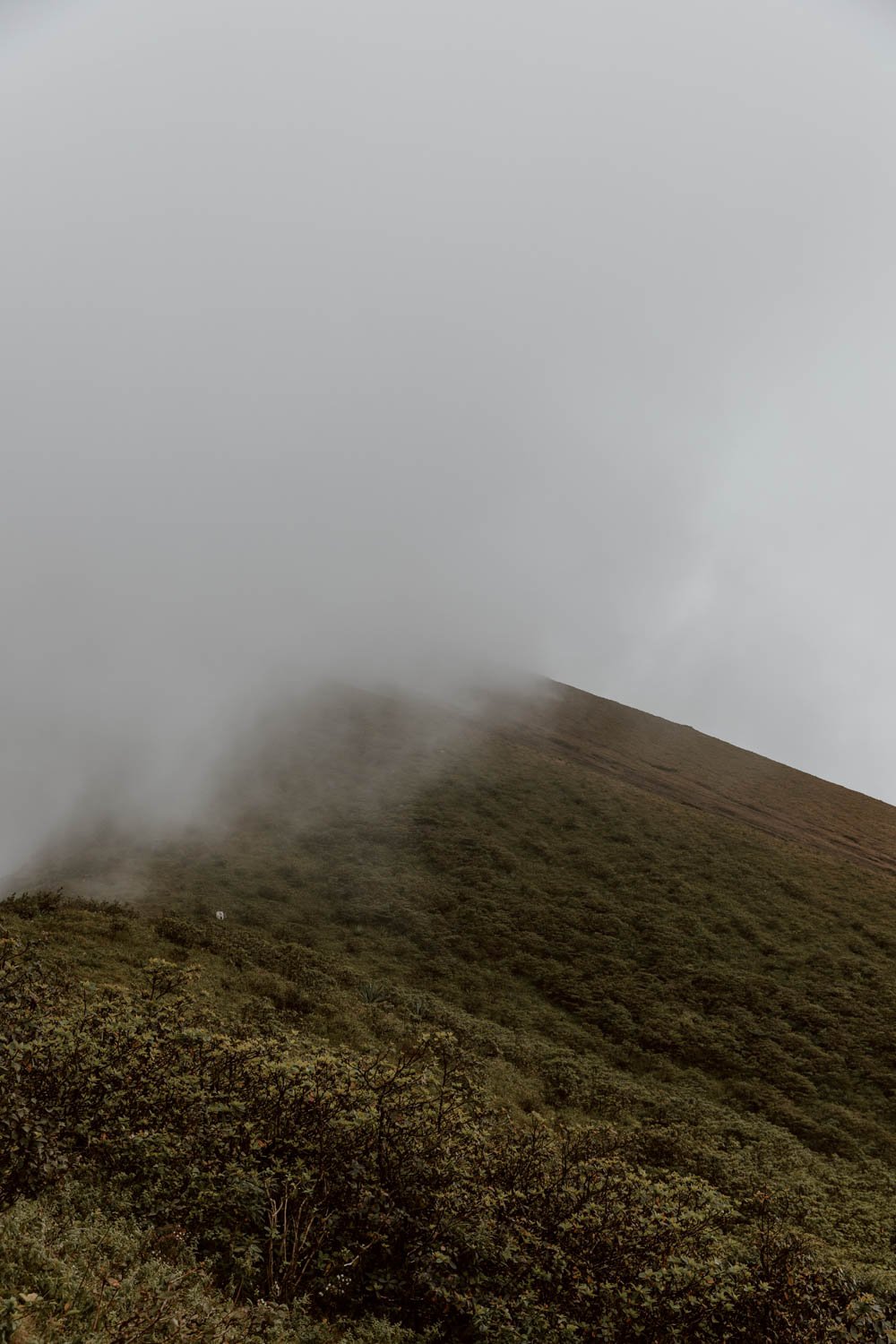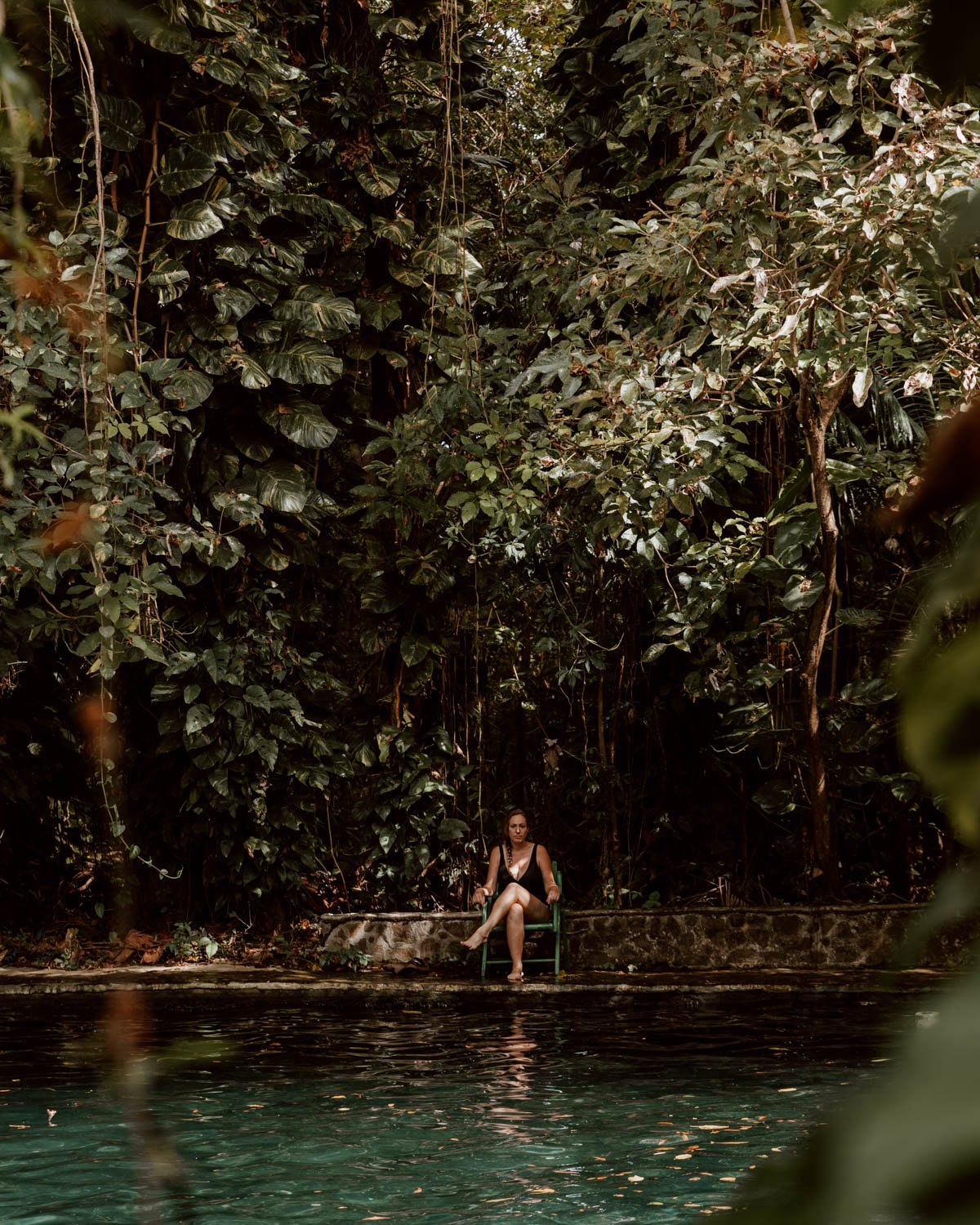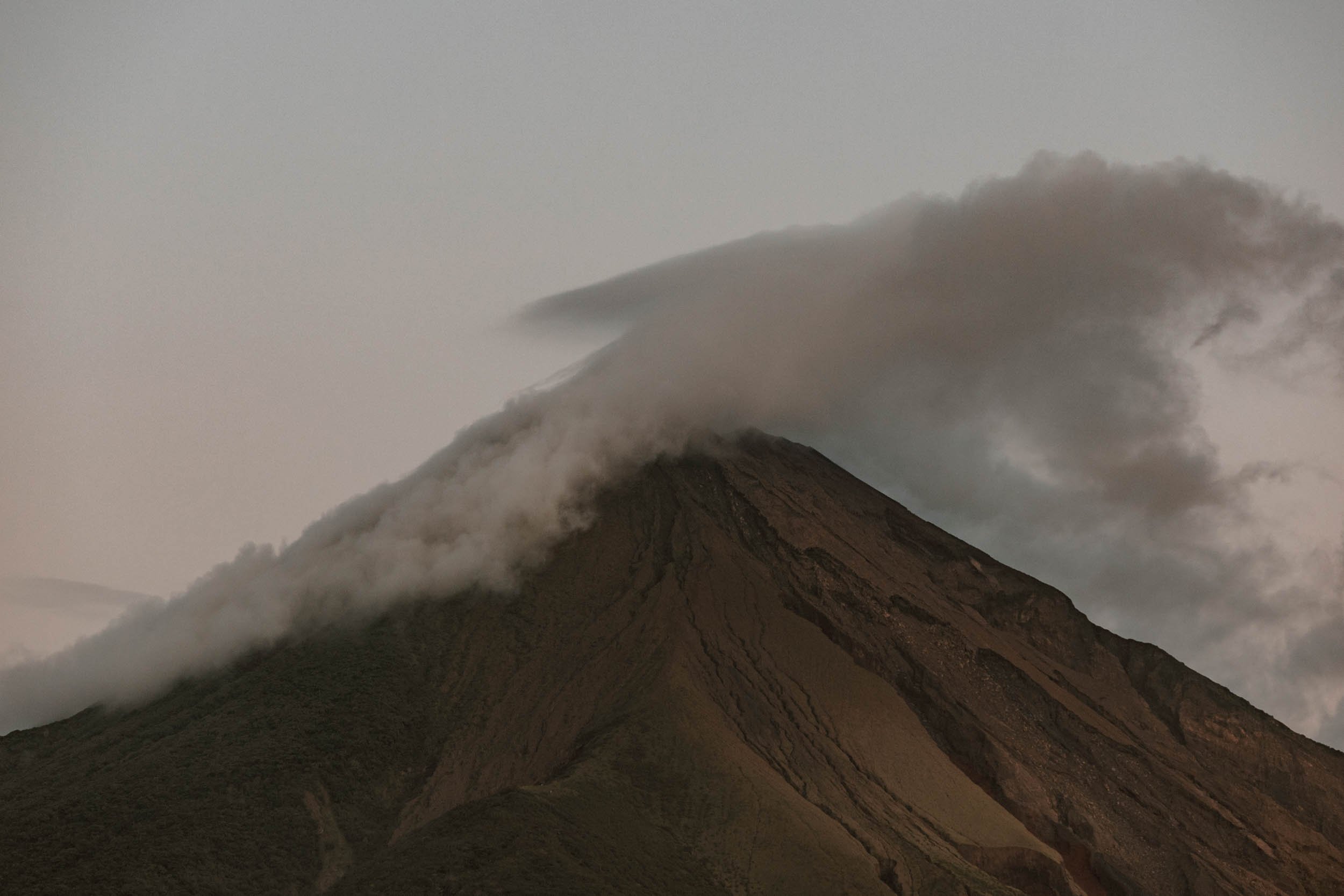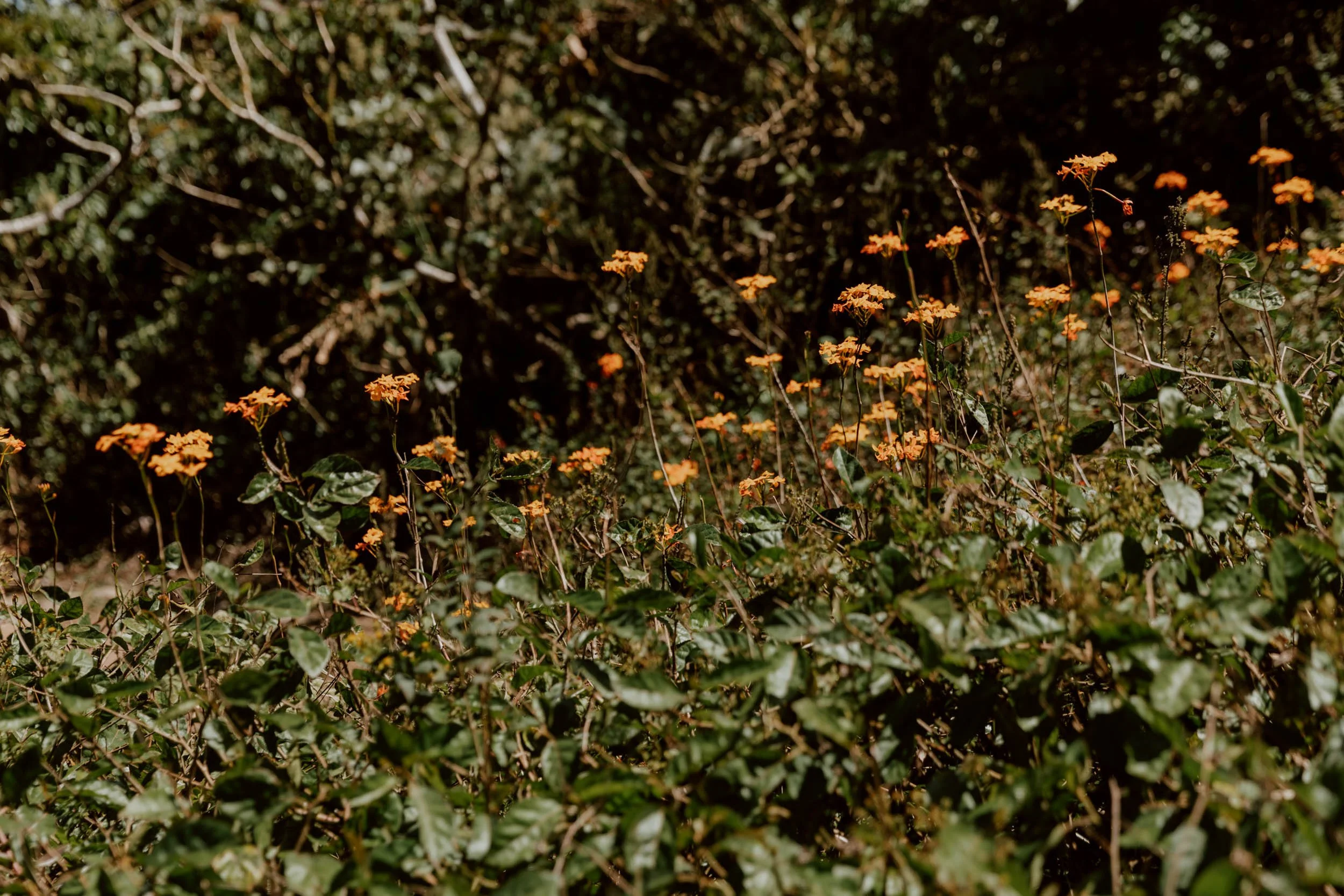Whether you’re planning a couple of days of active adventures or several weeks getting back to nature, understanding the rhythms and challenges of life on Ometepe is invaluable to planning your stay. In this guide we’ve shared our personal insights and essential things to know before you visit.
An island that is more volcano than anything else, situated within a gigantic freshwater lake, Isla de Ometepe captures several elements of the Central American travel experience in a microcosm.
We’ve shared all the inspiration and ideas you need for your visit in our main guide - 13 Wonderful Things To Do in Ometepe - but in this post, we wanted to share little practical insights and tips to help you make the most of your time on the island.
From transport and motorbike rentals, ATMs and crashes, to how long you need and where to stay, here’s 16 little things to know before you visit Ometepe.
It’s Home to Two of Nicaragua’s Most Challenging Volcano Climbs
Linked by a narrow isthmus, Ometepe is not simply an island with two volcanoes, it is an island made up of two volcanoes - Volcán Concepcion and Volcán Maderas.
One of fire, one of water.
One active, one dormant.
Both are essential to the unique ecosystem of Ometepe and importantly, for the adventurous amongst you, both can be climbed.
If you know Along Dusty Roads well, you know that we love to hike - and one half of the team absolutely adores hiking volcanoes. So, when we returned to Ometepe, we knew we could not board that boat back to San Jorge without haven’t conquered at least one.
(Spoiler alert: we settled on Concepcion, and you can find our reasoning for this here, as well as the key differences between each hike).
For those of you still deciding whether a volcano hike should factor into your itinerary, the most important thing to note is that neither are easy - especially in comparison to other popular volcano hikes in Nicaragua. They take hours (despite being relatively short in distance) and will challenge even the most dedicated outdoor enthusiast.
But my goodness will that beer at the end of the day taste good! Your thighs two days after will not, however, feel so good.
We’ve written a ‘Complete Guide to Hiking Concepcion Volcano’, and you can find more about both in our main guide to Ometepe.
You Need To Take A Boat From San Jorge
Whether you’re travelling from the north or south of Nicaragua, the vast majority of you will arrive into Ometepe on a boat from San Jorge, a small town a few kilometres from Rivas.
Boats leave almost every hour, every day of the week (with a more limited service on Sundays), take around 60 - 70 minutes and cost C$50 each.
We’ve written a complete guide on ‘How to Get to Ometepe’, so suggest heading over there for more information on bus routes to San Jorge and boat timetables.
It’s a really memorable journey, so don’t just sit staring at your phone!
The Boat From Granada Isn’t Convenient
After being closed down in 2016, we’re pleased to report that the ferry between Granada and Ometepe (Altagracia to be specific) has been back up and running since 2021.
Due to lower visitor numbers however, there is currently only a single departure on Monday at 5pm, which takes four hours to reach Ometepe, after which it continues on to San Carlos on the far east of Lago de Nicaragua. The return journey departs Altagracia at 2am on Wednesday morning, arriving in Granada at 6am.
A lot of travellers you’ll meet will mention this ferry service and have designs on taking it, as it sounds like a more enjoyable and convenient way to reach the island. Indeed, we planned to take the Granada to Ometepe ferry on our most recent 2022 trip, but good, reliable information at the time was hard to track down. Once we found the new schedule though, we realised that it doesn’t make sense for most travellers to take this new ferry.
Do note that this ferry may also be cancelled in the dry season due to low water levels in the lake.
Read Later | 13 Wonderful Things To Do in Granada
Ometepe Is Much Bigger Than You Think
If the idea of visiting a Central American island leads to thoughts of walking sandy paths barefoot, and covering the entirety of the landmass in a few hours (hello the Corn Islands, Providencia, and Utila), then the size of Ometepe may come as a bit of a shock.
In fact, with an area of 276 square kilometres, it’s the biggest island in a freshwater lake in the whole world! As a guide, it takes 45 minutes to an hour in the daytime to go from Moyogalpa to Santa Cruz (a village just over the isthmus that connects Concepcion with Maderas), and up to 2 hours in the bus.
We think the principal reason Ometepe is so deceptively, surprisingly big for first-time visitors is because of its situ in Lago de Nicaragua / Lago Cocibolca, which is the largest lake in Central America and just a smidge smaller than Lake Titicaca in Bolivia.
That means it’s very very big guys. And, unless your mental scale of relativity is correct when you open up Google Maps, the landmass in the centre that very very big lake is also pretty big.
(we promise not to use ‘big’ again in this post).
The Public Transport Isn’t Great
Due to the size, some form of transport is absolutely necessary to get around.
Unfortunately, the public buses on Ometepe run a pretty sporadic, slow schedule with limited routes available. The network of old chicken buses will be fine if you’re simply requiring them for the a few simple journeys from the port to your hostel or eco-lodge, but not fit for purpose if you plan on visiting several different parts of the island in a single day. Throw in the fact that a number of the best things to do in Ometepe involve a decent walk from the main ring road, and the buses become inconvenient too.
There’s a service every hour between between Moyogalpa and Altagracia, but several popular hostels are situated beyond this route, meaning you need to catch one of the less frequent services which goes toward Santo Domingo, Balgue, or Merida, wait around for a connection at the El Quino turn-off, or take the bus and then jump in a tuk-tuk to your final destination.
If travelling with public transport from the ferry, we’d recommend getting in touch with your hostel or accommodation before arriving to ask about the best way and timings, and arriving with an earlier ferry too. If you’re planning on relying on the bus network, our advice would be to base yourself in one of the larger hubs on the island to maximise connections and make exploring the island a little easier.
An important point to note is that on Sundays, the bus service is practically non-existent.
…So You Really Need Your Own Wheels
The above means that in order to experience and explore the island in any meaningful way (and to make it to all the the best places in Ometepe), having your own wheels is absolutely essential!
Bicycles are less available than on our previous trip to the island, with motorbikes - and to a lesser extent, ATVs - now the most common option for travellers to rent. If you’re short on time, then a motorbike or ATV will allow you to cover most highlights in two days.
There are countless rental companies dotted all around the island, especially in the main accommodation hubs; most hostels will also be able to organise a vehicle for you, potentially to be dropped off and collected where you’re staying .
Bicycle rental runs at approx $5 per day, whereas you can hire a motorcycle or scooter for $15-$20 USD per day and an ATV for around $55 - discounts are possible for rentals of 3+ days, but not guaranteed.We rented both our motorbike and ATV through a company in Moyogalpa, and encountered no problems with either. You can find out more or make a booking with them here for the motorbike, or here for an ATV.
A driving licence will be required, and with the latter two, you should always be provided with a functioning helmet.
There are tuk-tuks and some taxis available for shorter journeys, but the costs of these for day trips becomes prohibitive in comparison to renting your own.
The Roads Can Be Pretty Treacherous
Unfortunately, renting a motorbike in Ometepe is absolutely not without its risks.
We’ve lost count of the number of travellers we’ve met or heard tales of who overestimated their skills on the bike or attempted to navigate roads that really weren’t suitable, and came off. Some escaped with a few cuts and grazes, whereas a few required visits - and admissions - to the hospital for significant injuries.
If you see anyone with a fresh road scar in Nicaragua, chances are it’s from Ometepe.
Not only did this severely impact their time in Nicaragua, but most weren’t even covered by their insurance due to a quirk in many policies that requires you to have an official motorbike licence to rent a bike.
The tarmac ring road that you’ll spend most time on is a doddle, but it’s the uneven dusty roads which pose the most significant risk. Inexperienced riders often don’t know how to handle them - or think they can until it’s too late - or simply drive too fast or too slow for the conditions. The thing with Ometepe is that these types of sideroads are the only way to access places like Playa Mangos, Ojo de Agua, Finca Magdalena, and San Ramon Waterfall, so you can’t avoid them.
We rode a motorbike on some crazy roads in some crazy conditions during our first trip to the island in 2014, and things had actually improved a lot when we returned in 2022. However, we decided to go for the more expensive but more stable ATV for our first day of riding to tackle the more challenging roads, then rented a motorbike for another day’s exploring later in the week.
Whatever you do, just be careful and pay attention to any local or tour company who advises you not to go on a certain road with your vehicle. At present, the road up to San Ramon waterfall is an accident hotspot and you should not attempt to drive up it with your motorbike.
There is a lot of livestock roaming around Ometepe, with local farmers on horseback shepherding their cows or horses along or across roads. It’s a really lovely sight and aspect of life on the island, but just be aware and drive cautiously!
Lastly, when driving any type of vehicle, please also exercise extreme caution when driving at night as there are almost zero lights on the roads or through the towns, lots of speed bumps and road dips, pedestrians / horses / cows / dogs at the side of the roads with no lights, and lots of bicyclists too with no reflectors or lights. Inexperienced drivers should avoid driving at night full stop here, but everyone should go slow rather than rushing back for a return time.
How Long Do You Need on The Island?
Despite having driven across the island a few times during our last visit to Ometepe, we were still amazed by how long it takes to actually get from one side to the other.
If you’re renting wheels for one day and plan on hiking Concepcion or Maderas, then we think four nights is a reasonable amount of time for Ometepe.
If not hiking any volcano, you could cut this down to three, but that may feel rushed and you may wish to hang around for longer given the special vibe and tranquility on the island.
Those depending on the island’s somewhat limited bus network for adventures will inevitably require a number of days longer to properly see the best of Ometepe, given that the possibly of squeezing in more than one destination a day becomes much more difficult.
Similarly, if travelling time rich but money poor, planning on hiking both volcanoes, or wishing to disconnect and go deep into the lifestyle at the popular eco-lodges or permaculture farms, then a slow week should be your minimum.
It Has Really Fantastic Vegetarian Food Options
Whilst there is at least one really good vegan / veggie restaurant in most touristic destinations in Nicaragua, the vast majority of local restaurants (and indeed restaurants in general) offer quite a limited selection of the same things - think veggie quesadillas, veggie tacos, veggie burritos.
Ometepe however has upped her game, and if felt like the sort of place a plant based eater could eat out repeatedly and not get bored!
If there’s one place you absolutely have to visit (and this goes for meat-eaters as well) it’s Cafe Campestre (maps), a farm-to-fork enterprise in Balgue that has a fantastic menu offering up both excellent Indian fare as well as authentic handmade pasta.
Stock Up on Cash in Moyogalpa
There are two ATMs in Moyogalpa - one BAC, one Banco LaFise - helpfully situated on the same street (here and here on Google Maps), and these are your most reliable bet for cash.
If you’re not planning on staying in / around the town, we recommend bringing over a decent amount of cordoba with you or stocking up before you head out to your more remote accommodation.
If you’re caught short, a surprisingly large number of restaurants, accommodations and other businesses will take cards, but do note that many will charge an additional 5-6%. In our experience, frustratingly this is especially true in hotels and hostels when the bill will be significantly higher.
Where You Stay Will Shape Your Time on the Island
We’ve detailed the most popular hubs and best accommodation options for all travel styles in ‘Where To Stay in Ometepe’, but the overarching point to help you plan your own trip is to appreciate that which part of Ometepe you stay on will shape your experience of the island.
Moyogalpa is the small main town, so most convenient for groceries, transport, tours, hiking Volcan Concepcion, the ferry, and eating out; it won’t however give off the vibe and environment some people most closely associate with the island. That’s best found on more isolated spots across the isthmus like Merida and Balgue, where you’ll find a cluster of hippy hostels, eco-lodges, and permaculture farms as well as some great little restaurants; what you gain there though means you have to spend more time or money on transport and have fewer options for various facilities / amenities.
If renting a motorbike for a day or two though, that really does open up the whole of the island to you, meaning your priority should be more focused on staying at the place that’s best for your travel style, budget, and experience, rather than the fact it’s close to the ferry.
Read ‘Where To Stay in Ometepe’ to find the perfect accommodation for you.
Everything Shuts Down Early
Generally, the rhythm of Ometepe is based around earlier mornings and quiet early evenings due to life and trade being shaped around the ferry schedule and a sun that sets between 5-6pm all year round.
In Moyogalpa it can be difficult to find a tuk-tuk after 8pm and some restaurants start to close at 9pm, and this is common across the island. A few little bars will be open for longer, but the main point is not to end up stranded on the wrong side of the island after dark as transport will be nearly impossible to find.
The Rainy Season Opens Up Some Activities - And Takes Others Away
Having visited Ometepe the first time in October, and the second in February, we can attest to the fact that travelling during rainy season provides a very different experience than Nicaragua’s drier months!
Between February and April, Ometepe experiences very little rain. The ground becomes arid, the lake water vastly reduces, many rivers all but disappear and the lowlands fade from verdant green. This means that these months are excellent for hiking, exploring the small backroads and makes planning your time straightforward, without the concern of inclement weather.
The arrival of May however brings with it the rain! This is great news for those who dream of kayaking the Istian River, or hiking out to see the San Ramon waterfalls - activities that aren’t really possible in the dry season - but can make navigating the island a little trickier when landslides are common making some smaller roads impassable. Additionally, it may not always be possible to hike the volcanoes in the rainy season (May to October), especially Maderas whose trail is often very muddy at the best of times!
El Zopilote Is Not the Best Option For All
Before arriving in Ometepe you’ve likely spoken to people who recently visited (after all, other travellers are your best source of info!), and we can guarantee that at least one person will have mentioned El Zopilote.
This alternative hostel and permaculture farm is a bit of an institution on the island, having been around for years - but it won’t be for everyone.
In short, some people may find it a positive life-changing experience with fire dancing, breathwork and cacao ceremonies, whilst others may not be able to bear the vibe and will count down the nights until they can leave.
We won’t try and influence you in either direction, and just recommend doing your research before reserving in case it isn’t going to be your cup of tea.
Be Aware of the Weekend Crowds
For Ometepe residents and visitors from Managua, the weekend - especially Sunday - is sacrosanct. This is a time for baseball, hanging out with the family, and enjoying everything the island has to offer.
For the traveller however, this does mean that you need to picks your activities a little more carefully or you may find some of the more popular locations such as El Ojo De Agua and Playa Santo Domingo are a little too busy to be pleasant.
The same goes for public holidays!
Your Next Stop Is Likely Granada or San Juan del Sur
Depending on whether you’re going north or south, your next stop of Ometepe is likely to be the colonial city of Granada and Laguna de Apoyo, San Juan del Sur, or Playa Maderas. All are relatively easy to reach in 2-3 hours by public transport after the ferry, but you need to make a couple of connections.
We’ve shared specific details and advice on how to get from Ometepe to Granada and how to get from Ometepe to San Juan del Sur.
Where to Next?
13 Wonderful Things to Do in Ometepe
Where to Stay in Ometepe | The Best Hostels, Hotels & Eco Lodges
The Ometepe Ferry | Shcedules, Tickets & Tips
How to Get From San Juan Del Sur to Ometepe - Without Getting Ripped Off in Rivas
How to Get From Ometepe to Granada
23 Things to Know Before You Visit Nicaragua
13 Wonderful Things to Do in Nicaragua



